Seasonings to Use on Keto Diet
- Need help figuring out what to eat on the ketogenic diet? Use this keto food list to guide your meal plan.
- On the keto diet, you want to eat quality fats, moderate protein and minimal carbohydrates. Steak? Check. Bulletproof Coffee? Double check. But what about other foods?
- This keto food list for beginners shows you the best foods to eat and which to avoid. Plus, you'll learn how to pick quality foods to fill your plate with whole food nutrition.
Not sure what to eat on the ketogenic diet? This keto food list for beginners will get you started. To get into ketosis and stay there, your diet needs to support fat-burning. That means eating more quality fats and cutting out the carbs found in foods like bread and pasta.
Fortunately, you have plenty of delicious options when it comes to your keto meal plan. And once you get the hang of it, keto is packed with benefits like sustained energy, fewer cravings and more brain power.
Take the guesswork out of eating keto and use this keto food list for beginners to get started.
Keto food list for beginners
Transitioning to the keto diet might feel overwhelming or even a little mystifying, but we've done the work to help you get started. We compiled a comprehensive list of the best foods to eat on keto so you don't have to worry about whether something is macro-friendly.
Here's how to read this keto diet food list: Within each category, we'll list keto foods to eat freely, what to eat moderately and what to avoid. Treat this list as a starting point for your next grocery store trip. Prioritize whole foods, stay away from ultra-processed foods and pay attention to how you feel along the way. When possible, go with grass-fed, pasture-raised and/or organic products as you embark on your keto journey.
Fats and oils
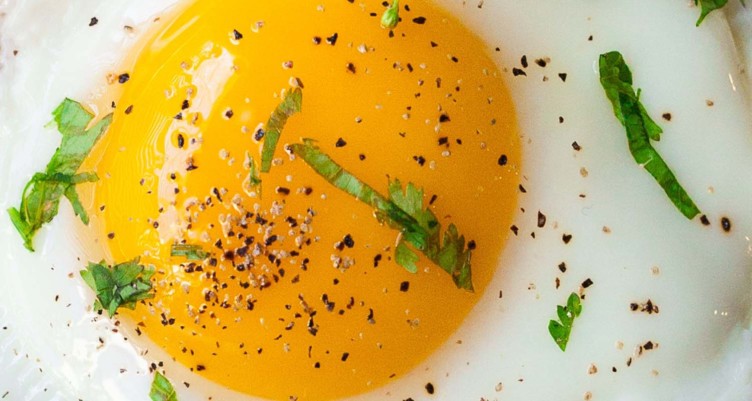
Fat makes up a bulk of the keto diet, to the tune of 75% of your daily calories—and if you're going to eat that much of anything, you want it to be the best quality you can get.
A clean keto food list for beginners consists of quality fats—aka minimally processed, high-fat foods that support healthy ratios of omega-3 and omega-6 fatty acids. That means more grass-fed butter (yay!) and no margarine (yikes!).
Avoid trans fats, hydrogenated fats, polyunsaturated fats and other processed vegetable oils. Limit your intake of inflammatory omega-6s, which can hide in poultry, nuts and seeds, grain-fed meats and farmed seafood.
We're not fans of the levels of polyunsaturated fats found in conventional vegetable oils. But if you see terms like "high-oleic," that means the oil has higher levels of monounsaturated fats—the same healthy fats found in olive oils.
Translation: High-oleic, non-GMO sunflower and safflower oils are similar to other keto-friendly quality fats. Science!
Keto fats and oils list
The best keto-friendly fats and oils include:
- Avocado oil
- MCT Oil
- Bacon fat and lard from pasture-raised pork
- Cacao butter
- Coconut oil
- Cod liver oil
- Egg yolks
- Grass-fed butter and grass-fed Ghee
- Marrow and tallow from pasture-raised beef
Eat moderately: Chicken fat, duck and goose fat; grain-fed butter and ghee; nut oils
Avoid: Canola, cottonseed, corn, flaxseed, peanut and soy oils; linoleic safflower and sunflower oils; commercial lard; low-carb commercial dressings; margarine
Related: Is Fat Good for You? Everything You Need to Know About Dietary Fats
Protein
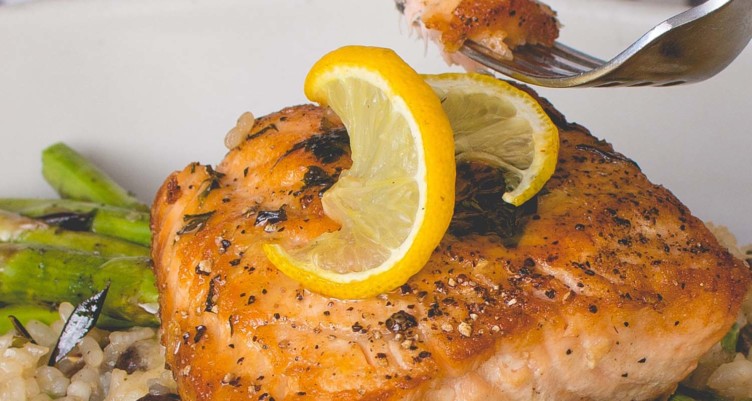
If you stick to fatty cuts of grass-fed and pasture-raised meat, there aren't too many keto rules here. Don't sleep on wild-caught seafood: fatty fish like mackerel, salmon and sardines are excellent, nutrient-dense proteins on keto. Just keep an eye out for sneaky carbs in shellfish like mussels and clams.
If you can't get your day's protein from quality animal sources, fill in the gaps with grass-fed whey protein concentrate (not heavily processed whey isolate). As an added bonus, grass-fed collagen protein will help up your amino acid count, along with supporting healthy skin, bones and joints.
What about soy protein? Regardless of diet, we're not fans of soy products due to its phytoestrogen content and high levels of inflammatory linoleic acid. Plus, with so many diverse options available, you're better off getting your protein from other food sources.
Keto protein list
The best sources of protein for keto dieters include:
- Collagen Protein
- Collagelatin
- Colostrum
- Grass-fed whey protein concentrate
- Grass-fed, pasture-raised meat
- Pasture-raised eggs
- Wild-caught seafood
Eat moderately: Deli meats; factory-farmed meat, seafood and eggs; heated whey/whey protein isolate
Avoid: Protein powders from grain-fed animals, soy protein
Where's the beef on your keto food list?
Things get complicated if you follow a dirty keto food list and eat drive-thru burgers and hot dogs on the regular.
Heavily processed proteins are higher in preservatives, additives and inflammatory fatty acids that can derail your health goals over time on a low-carb diet. When you do eat meat, prioritize quality. For the biggest nutritional benefit, look for grass-fed, organic, pasture-raised or wild-caught proteins.
Make no mistake: Ground beef and bacon alone are not the keys to keto. If you get more protein than your body can use, your body will begin converting protein to sugar through a process called gluconeogenesis—and kick you out of ketosis.
Stick to your macros and balance your plate with lots of quality fats, moderate protein and plenty of vegetables from our clean keto food list.
Vegetables
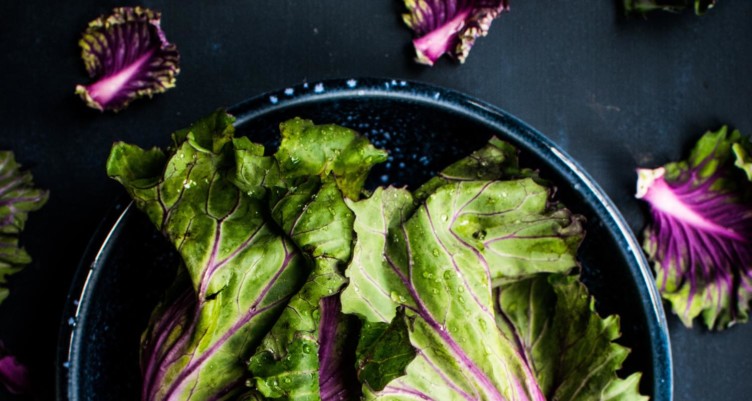
Eat your low-carb vegetables, kids: They're delicious sources of fiber, essential nutrients and flavor, without a lot of carbs. Your clean keto food list sticks to nutrient-dense, lower-carb veggies that are low in naturally-occurring sugars, like broccoli, spinach and zucchini.
Truth is, you can eat most vegetables on keto, as long as you're mindful of your serving sizes and total carb intake. If a small amount of lower-carb squash (like delicata, kobocha or chayote) fit into your diet plan, go for it—although we recommend saving higher-carb foods for later in the day, or timing your carb intake after a workout.
Some quick notes on veggies in our keto food list for beginners:
- Nightshades like bell peppers and eggplants are great on keto, but in some people, they can contribute to inflammation and food sensitivities. If this is you, cutting out nightshades may be beneficial.
- Aromatics like onions and leeks add a lot of flavor to foods, but they contain natural sugars. Be mindful of your portion sizes.
- We prefer to lightly cook any oxalate-heavy cruciferous and leafy greens to improve nutrient absorption and make them easier to digest.
- When possible, buy organic vegetables to minimize toxin exposure. Use the EWG's Shopper's Guide to Pesticides in Produce as a quick reference at the grocery store.
Keto vegetables list
What are the best veggies to consume when you're keto? Here's what you should have in your fridge:
- Asparagus
- Dark leafy greens (such as arugula and watercress)
- Bok choy
- Broccoli
- Brussels sprouts
- Cauliflower
- Cabbage
- Celery
- Chard
- Collards
- Cucumbers
- Endive
- Kale
- Kohlrabi
- Lettuce
- Mushrooms
- Nori
- Olives
- Radish
- Spinach
- Summer squash
- Zucchini
Eat moderately: Artichokes, celery root, eggplant, garlic, green beans, jicama, leeks, okra, onion, peppers, raw cruciferous vegetables, rhubarb, turnip
Avoid: Corn, peas, most root vegetables (such as parsnips, potatoes and sweet potatoes), winter squash, vegetables in BPA-lined cans
Fruits
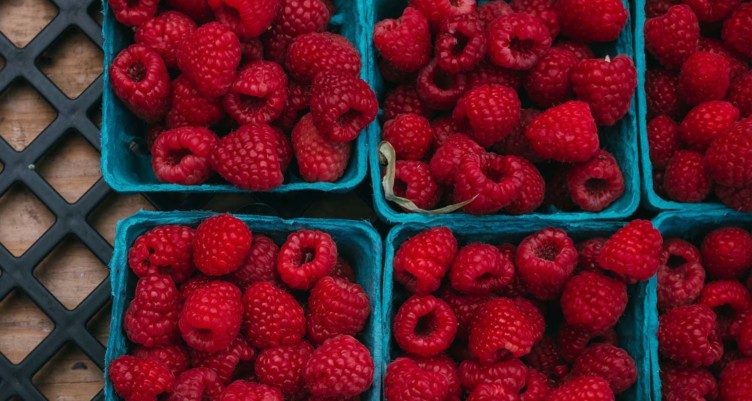
Fruit is called "nature's candy" for a reason. The sugar content in most fruits can quickly take you out of ketosis. Coconut and avocado are the exceptions, plus antioxidant-packed fresh berries. Go for organic berries when possible, and be mindful of your portions. Don't worry about scurvy—you'll still get plenty of vitamin C in those strawberries.
Lemons and limes may contain sugar, but if you're just squeezing a wedge into your water, you're in the clear. For a fruity refresher without the high sugar content, try this Keto Green Lemon Smoothie.
Keto fruit list
Although fruit isn't a big part of the keto diet, here are the best ones to stock up on:
- Avocado
- Strawberries
- Raspberries
- Blackberries
- Coconut
Eat moderately: Lemon, lime, melon, tomatoes, tomatillos
Avoid: Apples, bananas, grapes, mango, oranges, peaches, pears, pineapple
Legumes, nuts and seeds
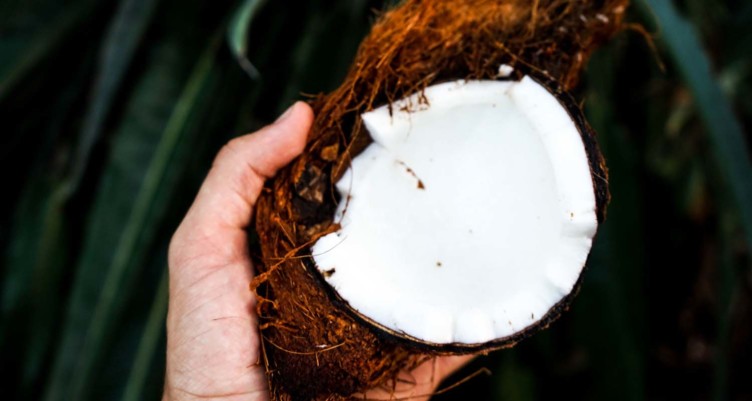
Although excellent sources of fat, nuts add up quickly in protein and carbs. Snack on fattier nuts such as walnuts, macadamia nuts and pecans, but limit those high in inflammatory omega-6s, like peanuts and sunflower seeds. Limit high-carb nuts like pistachios and chestnuts, and pass on most beans.
Use nut milks (like almond milk and cashew milk) and nut flours (like almond flour and coconut flour) in moderation, and check your labels—macronutrients can vary widely between brands. You'll want a product with fewer carb counts per serving and no extra additives, sugar, starches or binders.
Need inspiration? Whip up a batch of Fluffy Almond Flour Pancakes or Low-Carb Almond Flour Pie Crust.
Keto legumes, nuts and seeds list
When it comes to legumes, nuts and seeds, the best ones to consume if you're on the keto diet are:
- Coconut
- Macadamia nuts
- Pecans
- Walnuts
Eat moderately: Almonds, Brazil nuts, cashews, hazelnuts, peanuts and pistachios; nut butter; seeds (such as chia seeds, flaxseed, pumpkin seeds and sesame seeds)
Avoid: Most beans, lentils
A note about nuts
The Bulletproof perspective on legumes, nuts and seeds is pretty different from keto. With the exception of coconut, we recommend limiting your intake of nuts and legumes because they can contain high amounts of inflammatory oxidized fats, mold toxins and plant anti-nutrients.
So, are nuts, seeds and legumes "bad?" Not necessarily. These keto-friendly foods can absolutely fit into a healthy diet. Some people feel great when they eat peanuts, while others encounter food sensitivities. Pay attention to how you feel, be mindful of your macros and opt for organic, high-quality products whenever possible.
Dairy
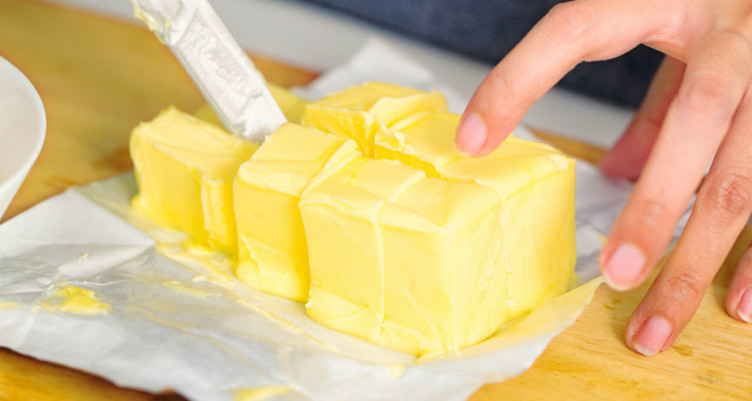
Organic, full-fat dairy from grass-fed cows is packed with nutrients—if you tolerate it. And on the keto diet in particular, you want to double-check the ingredients to make sure you're not eating surprisingly high amounts of carbs or added sugars per serving, which are common in cheeses categorized as low-fat (no thanks!). Pre-shredded cheeses may also clock in with higher carb counts due to added starches that keep the product from caking.
Opt for full-fat, grass-fed, organic dairy to reap the health benefits of omega-3s and conjugated linoleic acid (CLA). Be mindful not to over-do the protein, especially if you're regularly chowing down on foods like Greek yogurt and cottage cheese. Remember, too much protein can kick you out of ketosis.
Although heavy cream is common on keto, avoid straight-up milk and half-and-half because it contains lactose sugars—aka too many carbs per serving to swing it on keto. Say "no whey" (sorry) to sweetened or low-fat dairy, evaporated and condensed milk and processed cheese products. Cream cheese is keto-friendly, but look for organic varieties made without carrageenan, which can contribute to inflammation and stomach upset.
Keto dairy list
Dairy doesn't work for everyone. However, if you can tolerate it, here are the best dairy foods to have on keto:
- Grass-Fed Ghee
- Grass-fed butter
- Colostrum from grass-fed cows
Eat moderately: Full-fat cottage cheese; heavy cream; kefir; whole milk Greek yogurt; whole milk ricotta; soft, semi-soft and hard cheese (such as feta and parmesan); sour cream
Avoid: Heavily processed cheese, low-fat dairy, margarine, milk
What to do if dairy doesn't work for you
From a Bulletproof perspective, dairy isn't a key player in our diet. That's because dairy can be highly inflammatory, allergenic and contain proteins that are difficult to digest, and ultra-processed cheese tends to contain a laundry list of ingredients (instead of just…cheese).
If you tolerate dairy, more power to you. It's a solid source of nutrients, fat and protein. When it comes to dairy products, you want very few ingredients on the label, and you want each of those ingredients to be the best quality possible.
Beverages

When you're looking for keto-friendly beverages, watch out for added sugar, artificial sweeteners and artificial flavors. Be mindful of your serving sizes, too—while a splash of coconut water in your smoothie can add flavor and electrolytes, a full 16-ounce can may contain as much as 30 grams of carbs. Yikes.
Stay hydrated with plenty of water, and reload on electrolytes with bone broths, especially during the "keto flu" in the first few weeks of your diet. Tea and coffee, including Bulletproof Coffee, are completely keto-friendly.
Even better, Bulletproof Coffee is made with Bulletproof Brain Octane C8 MCT Oil. In fact, MCT oil is basically a cheat code for keto because it boosts ketone production, fat-burning and cognitive performance.
What about booze? While beer is generally not part of a keto eating plan (unless you find a lower-carb, gluten-free variety), you can enjoy an occasional cocktail if you're mindful about what you're drinking. Wine, mixed drinks and even hard seltzers can contain hidden carbohydrates that might knock you out of ketosis. Get the details about keto and alcohol.
Keto beverage list
When plain ole' water just doesn't cut it, here are the best beverage options for keto dieters:
- Bone broth
- Coffee
- Coconut milk
- High-quality tea
- Mineral water and sparkling water
Drink moderately: Coconut water, keto-friendly alcohols (such as clear liquors and dry wines), vegetable juice
Avoid: Beer, drinks made with artificial sweeteners, sweetened energy drinks and sports drinks
Spices, seasonings and condiments
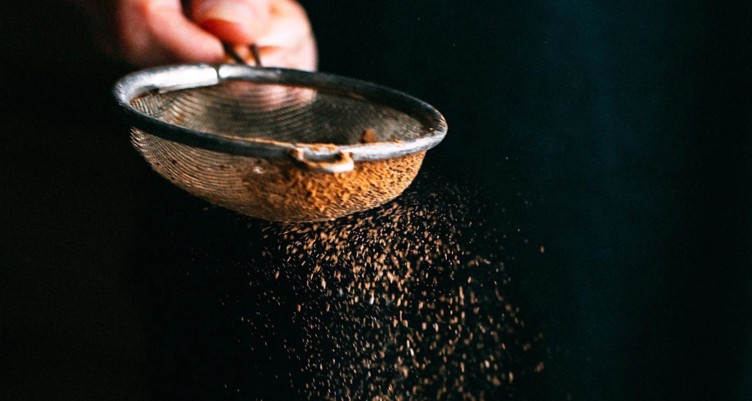
Be mindful of added sugars or high-glycemic sweeteners in spice blends or condiments. But other than that, spices and seasonings are fair game for keto. Technically, carbs can add up in spice-heavy dishes—but don't worry about a teaspoon of turmeric, especially when your spices are spread throughout an entire dish.
When you're shopping for spices and sauces, check the labels for additives like sugars, milk solids, potato starch, corn starch or MSG. Even unsweetened ketchup contains natural sugars from all those tasty tomatoes. Tired of reading the labels on store-bought salad dressings? Make your own! Start with these MCT oil salad dressings.
Heads up: Table salt often contains undisclosed fillers and anti-caking agents, so for the most healthful way to salt your food, add sea salt or Himalayan pink salt to your shopping list.
Additionally, spices and herbs can spoil in your home. That's why we recommend using high-quality, fresh or recently opened herbs and spices—particularly black pepper, garlic, nutmeg and paprika.
Keto spices, seasonings and condiments list
Need to add some flavor to your recipes? Here are the best keto-friendly spices, seasonings and condiments:
- Apple cider vinegar
- Cacao powder
- Coconut aminos
- High-quality herbs and spices (such as black pepper, Ceylon cinnamon, cumin, ginger, oregano, thyme and turmeric)
- Mayonnaise made with quality oils
- Sea salt
- Vanilla bean
Eat moderately: Balsamic vinegar, hot sauces that contain carbs and sugar, premade dressings and sauces (check the labels)
Avoid:Artificial flavors, artificial sweeteners, MSG, packaged sauce and spice mixes with added starches and sugars, soy products
Sweeteners
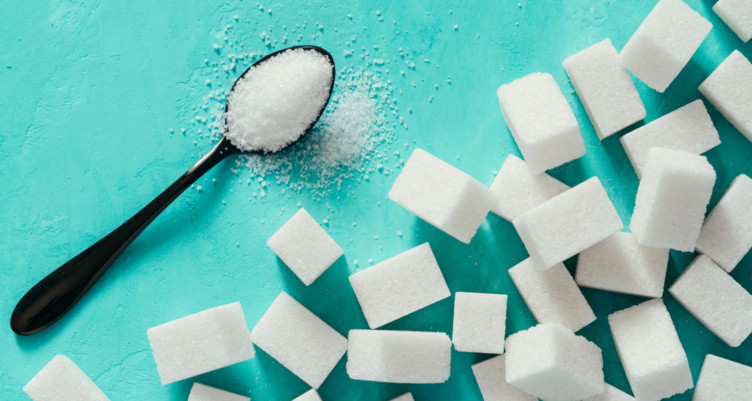
A spoonful of sugar may help the medicine go down, but it isn't part of a ketogenic diet. That doesn't mean abandoning your sweet tooth, though. It's easy to get a sweet fix using keto-friendly sweetener alternatives.
On your clean keto food list, stick to low-glycemic sweeteners to avoid spikes in blood sugar, and avoid fillers and binders such as maltodextrin and dextrose, which can spike blood sugar and contain sneaky carbs. Sugar alcohols such as maltitol or xylitol can still cause moderate glycemic response when digested, so have them in moderation.
While technically sugar-free, we don't recommend artificial sweeteners like aspartame, ace-K and sucralose because of the potential for negative health risks. Plus, there are more healthful, plant-based, keto-friendly sweeteners like stevia and monk fruit available at your local grocery store—without the same potential for risky side effects.
Looking for keto-friendly sweets that won't tank your macros? Try these delicious keto recipes:
- Keto Lemon Bars
- Keto Fudge
- Low-Carb Pumpkin Spice Fat Bombs
- Pumpkin Collagen Bread
Or just grab a Bulletproof Chocolate Dipped Collagen Bar. With MCT oil, collagen protein and just 3-4 grams of net carbs per bar, these bars are keto-friendly nutrition, dipped in chocolate.
Keto sweeteners list
It is possible to satisfy your sweet tooth on keto. Here are the best sweeteners to keep in your pantry:
- Allulose
- High-quality dark chocolate
- Non-GMO erythritol
- Monk fruit
- Stevia
Eat moderately: Maltitol, natural sugars found in whole foods like berries and tomatoes, sorbitol, xylitol
Avoid: Acesulfame potassium (Ace-K), agave, aspartame (NutraSweet), coconut sugar, fructose, high-fructose corn syrup, honey, maltodextrin, maple syrup, sucralose (Splenda), sugar
Navigating the keto food list
Our keto diet food list should serve as a guide to keep you on the right path. Of course, life happens, so you may find yourself having a few too many "avoid" foods when stress and other factors get in the way. If that happens, you can navigate back on course by keeping things simple. Stick to the best foods to eat on keto (along with those in the "in moderation" categories). Baby steps will get you there; just make sure to hold yourself accountable on your keto journey!
Keto diets do not line up with the US recommended daily allowances (RDA) of macronutrients, so run your diet plans by your doctor to see if keto is right for you.
Join over 1 million fans
Sign-up for the Bulletproof mailing list and receive the latest news and updates!
This article has been updated with new content.
Seasonings to Use on Keto Diet
Source: https://www.bulletproof.com/diet/keto/keto-food-list/